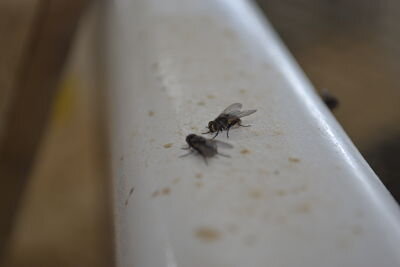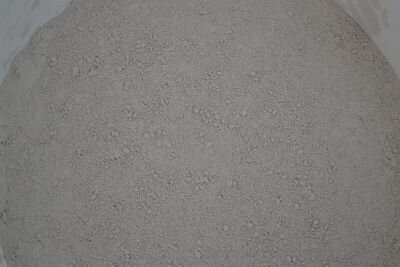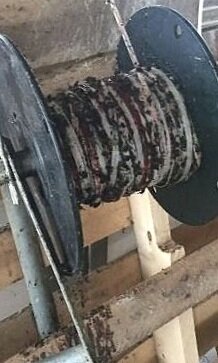Colostrum is hugely beneficial for dairy calves. It provides a calorie dense, immunity forming meal that can set calves up for a lifetime of success. However, a 2008 study found that 25% of both male and female dairy calves have failure of passive transfer, which means they did not receive adequate quantity and quality colostrum (Renaud et al 2020). A recent article published in the Journal of Dairy Science looked at why this is happening and if benchmarking motivates producers to improve colostrum management (Wilson et al, 2023). What they found was that producers are motivated to improve their colostrum management if they see an opportunity to do so and are provided the support and information needed to make changes. Some of the challenges identified that block change is financial, lack of labour, and lack of time. This brings up two questions: 1) what is successful passive transfer and 2) if colostrum management needs improvement how can we accomplish it?
What is successful passive transfer?
The latest guidelines for successful passive transfer take a gradient approach rather than a basic cut point of > 5.4% serum total protein (STP) (Table 1). I think this makes a lot of sense and now aim for over 9.4% on Brix.
Table 1) Current guidelines for serum total protein (g/dl) and Brix (%) for successful passive transfer, based on Lomard et al, 2020.
How can we improve colostrum management and passive transfer scores?
Option 1) Feed 4L of colostrum within 4 hours of birth
Strengths: feeding 4L of colostrum within 4 hours of birth has been well established to improve rates of passive transfer, it is low cost and represents a small protocol change from 3L to 4L
Challenges: getting the colostrum harvested within 4 hours if feeding dam to calf, limited labour during evening and nights can result in calves not getting colostrum in appointed times, cows not producing enough colostrum to feed calves, calves being unwilling to drink a full 4L resulting in the need for calves to be tube fed, which can be intimidating.
Option 2: If colostrum volume is limited at 3L, feed colostrum by bottle.
It has been shown that calves fed 3L of colostrum by bottle have better absorption than calves fed 3L by tube feeder. *Successful passive transfer rates are still higher when feeding 4L of colostrum, regardless of bottle fed or tube fed**.
Strengths: can be implemented easily and cheaply.
Challenges: This difference disappears when feeding 4L. Getting colostrum into the calf quickly is always better than spreading the feeding of 3L over several hours if the calf will not voluntarily drink 3L. When we break the first colostrum feeding into smaller multiple feedings we see absorption decrease dramatically and increased rates of failure of passive transfer. So this approach only works for calves that will drink 3L in one feeding within 4 hours of birth and colostrum availability is limited.
Option 3: Check and correct cleanliness issues.
It has been shown that colostrum that is contaminated with bacteria has lower absorption.
Strengths: This can be a low-cost area for easy improvement. Taking a colostrum culture from the end of the nipple or tube used to feed the calves can give you a quick snapshot of the cleanliness of your colostrum collection from udder to calf. If this is elevated, you can look back at the different steps of the collection and preparation process to find out where cleanliness can be improved.
Challenges: This is an area that needs to be constantly monitored to ensure that protocols are being followed. Samples do need to be sent to a lab for culture or more advanced on farm culture techniques need to be followed.
Option 4: improve quality fed at first feeding by testing colostrum quality and only feeding top quality at first feeding
Strengths: Purchase of a Brix Refractometer is around 50 dollars and can be used to accurately categorize colostrum quality. Thus, ensuring the best quality colostrum is fed to calves immediately after birth. This is most important for any excess colostrum that you are freezing to use for cows that do not produce much colostrum, why go to all the trouble for a poor-quality product. Additionally, it can give you an opportunity to identify very good quality colostrum out of a second milking. This can be used as supplemental colostrum or if high enough quality (over 22% on Brix) as a first feeding for another calf.
Challenges This does not change the quality of colostrum you are harvesting. It just allows you to ensure that you are giving the best.
Option 5) Feeding transition milk:
while the traditional focus has been on the first colostrum feeding in the first 4 hours, which is the biggest bang for your buck, there can be additional absorption of colostrum within the first 24 hours and if not absorbed directly can provide local intestinal immunity and an energy boost.
Benefits: Feeding transition milk in the first week of life has been shown to improve health outcomes for calves with failure of passive transfer, improve gut development and improve recovery from diarrhea
Challenges: This can be challenging to manage to ensure that you are correctly identifying, storing, and warming the transition milk. While there are major benefits to this it could be a labour and cost prohibitive approach.
References
Lombard, J., Urie, N, Garry, F., Godden, S., Quigley, J., Earleywine, T., McGuirk, S., Moore, D., Branan, M., Chamorro, M., Smith, G., Shivley, C., Catherman, D., Haines, D., Heinrichs, A.J., James, R., Maas, J., Sterner, K.2020. Consensus recommendations on calf and herd-level passive immunity in dairy calves in the United States. J Dairy Sci. 103:7611-7624. https://doi.org/10.3168/jds.2019-17955
Renaud, D.L., Waalderbos, K.M., Beavers, L., Duffield T.F., Leslie K.E., Windeyer M.C. 2020. Risk factors associated with failed transfer of passive immunity in male and female dairy calves: A 2008 retrospective cross-sectional study. J. Dairy Sci. 103-3521-3528 https://doi.org/10.3168/jds.2019-17397
Wilson, D.J., Roche, S.M., Pempek, J.A., Having, G., Proudfoot, KL. Renaud, DL. 2023. How benchmarking motivates colostrum management practices on dairy farms: A realistic evaluation. J.Dairy Sci. 106.9200-9215 https://doi.org/10.3168/jds.2023-23383
Want blogs delivered right to your inbox? Click here to send an email to a.stanton@nextgendairy.com














